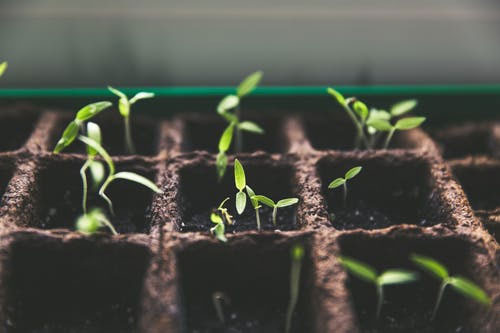Gardening has always been something I wanted to be successful doing, and I have tried. In fact, several times with little to no success. I would either have an overgrowth of plants with little production or no growth at all. I have tried starting my plants inside, (this is another tale that I hope to share later), but right now, I am going to share my eye opening, newly-obtained knowledge regarding soil. As shared in my last article, I lived in a world where dirt and soil were the same. I believe my gardening fails have been due to a lack of knowledge regarding soil health. Gardening is more than dropping a seed in the ground, walking away, and hoping it grows. There is a real science behind successful gardening and growing healthy plants.
Taking soil for granted is a huge mistake. Having healthy soil is the foundation of productive gardening. Before my enlightenment, I thought all soils were created equal. Not true! Soil can be made of clay, sand, silt, or a mixture of all three. Too much or too little of the different types of soil can make or break your efforts to have a good foundation for growing plants.
Soil is made up of many components, such as minerals, organic matter, water, air, and microorganisms. Each component has a job to do to make its presence known in the formation of healthy soil. Minerals such as Carbon, nitrogen, and phosphorous are just a few of the minerals present in the make-up of soil. Also, organic matter which comes from dead and decaying plants and animals contributes to soil nitrogen, phosphorous and sulfur. Water and air are important factors for sustaining all life; this includes the life of soil. Water is a transportation means for nutrients to travel to plants and the critters living in the soil. Air is found in the pore spaces in the soil make-up. A few of the gases found in soil air include oxygen, nitrogen, carbon dioxide and water vapor. Last, but not least, microorganisms (the living critters in the soil) include bacteria, fungi, algae, protozoa, arthropods, nematodes and worms. Wow, and I thought it was just dirt.
It may seem overwhelming to take the time to learn and act on maintaining healthy soil, but I feel anything worth having (healthy soil) is worth the effort. Never fear, there are tests and practices to help protect our natural resources such as soil health. The OSU Extension Office offers instructions on how to collect and send soil for testing. Knowing what the soil conditions are is key, since once this is known, building can begin. If you get your soil tested, but need help figuring out what the results are telling you, give us a call at 740-454-2027. Our Ag Technicians, Van and Melissa, will be glad to help you out. The Muskingum Soil and Water Conservation District has a wealth of information on their website at www.muskingumswcd.org regarding preserving our natural resources. Please check us out.
I am enjoying reading and learning about our natural resources and having the opportunity to write and share. I am constantly blown away by what I have taken for granted, such as clean water, healthy soil, and fresh air. We each have a responsibility to care for our natural resources, so there will be clean water, healthy soil, and fresh air for another newbie to discover.
I will be putting my newfound conservation knowledge to work. I am looking forward to having a successful, productive garden next year, or have the healthiest weeds on the block. Picking the correct seeds to plant will also factor into my success. So, back to reading and learning because our natural resources are worth it!
Our annual berry plant sale is going on now through April, 26th. | Order Online Today! • Our annual fish sale is going on now through April, 26th. Pickup day is May 7th. | Order Online Today! • We will be on Live At Noon on Monday, April 29, 2024 with NRCS.
